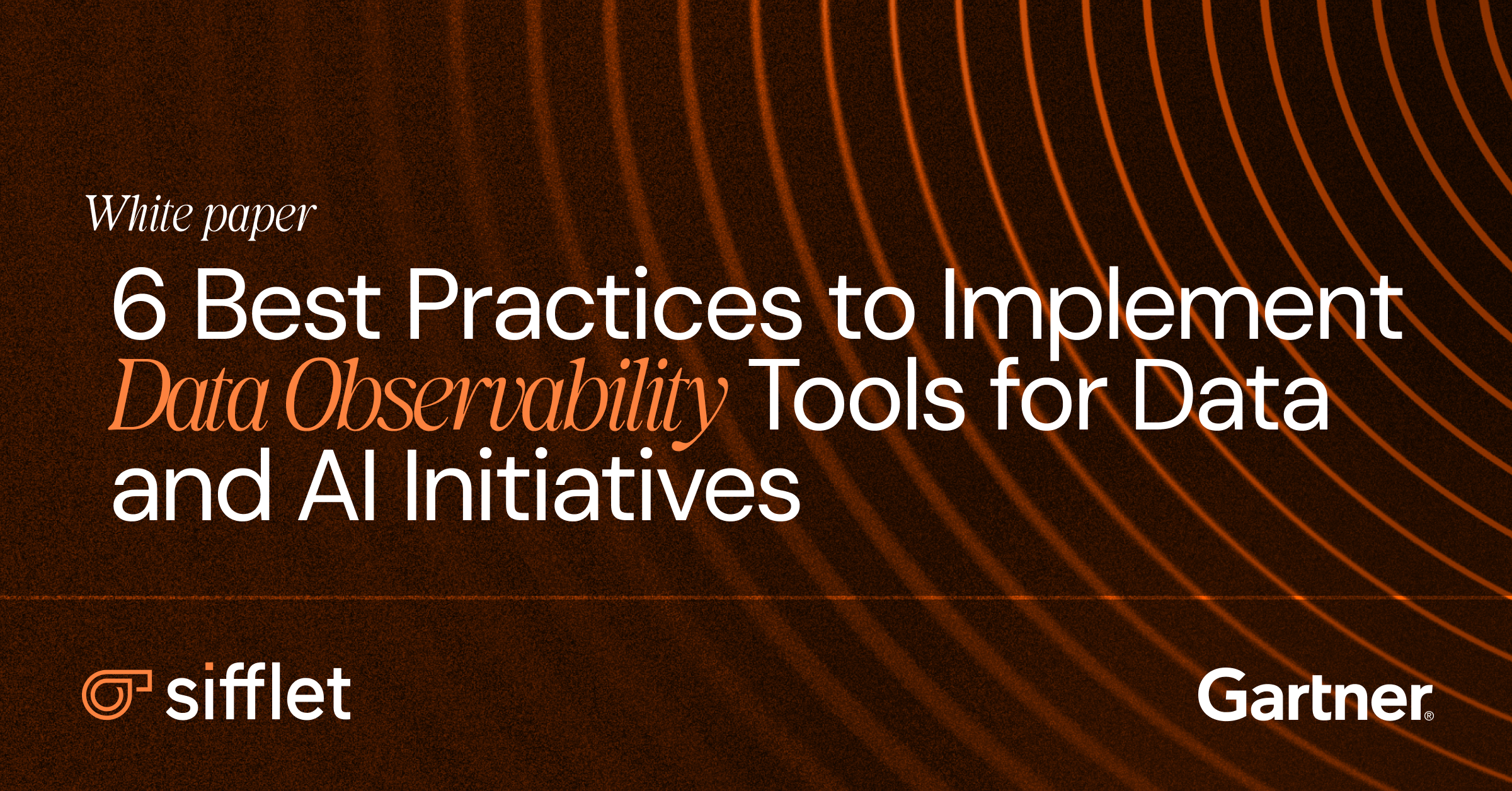Gartner®: 6 Best Practices to Implement Data Observability Tools for Data and AI Initiatives
Data observability is now critical to ensure reliable, trusted data pipelines for analytics and AI. In this Gartner’s new report, “6 Best Practices to Implement Data Observability Tools for Data and AI Initiatives,” we'll believe you'll find out how organizations can move from reactive monitoring to proactive observability, achieving full visibility, stronger governance, and faster AI delivery.

Gartner predicts that by 2027, 70% of enterprises implementing distributed data architectures will have adopted data observability tools to improve visibility across their data landscape.
What you’ll learn in this report
- How to design a comprehensive data observability strategy aligned with business goals
- The functional and technical criteria for choosing the right observability tools
- How to embed observability into every layer of your data pipeline
- Ways to integrate observability with governance and compliance frameworks
- Practices for fostering collaboration, literacy, and accountability across data teams
- How to continuously improve and prepare for GenAI-driven observability
AI models are only as trustworthy as the data they learn from.
Traditional monitoring can’t keep pace with modern, distributed data systems generating terabytes of telemetry each day.
Data observability gives teams the continuous insight needed to detect and resolve issues before they break downstream processes or corrupt AI outputs.
It’s the foundation for governed, explainable, and reliable AI.










-p-500.png)
